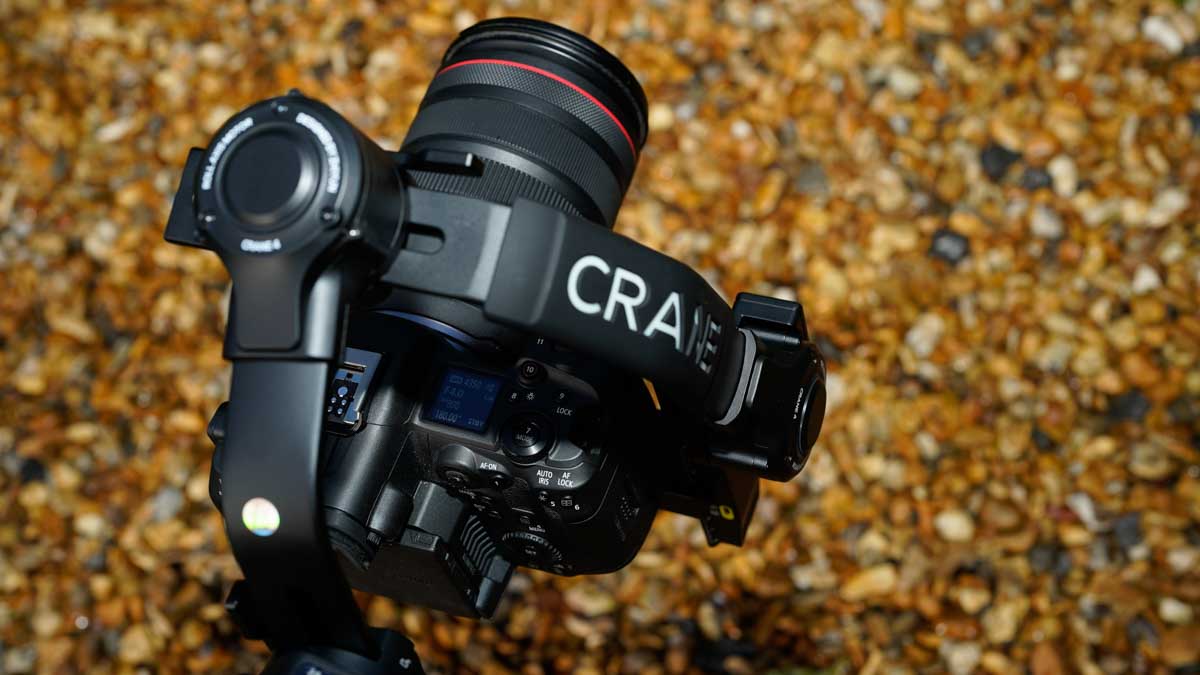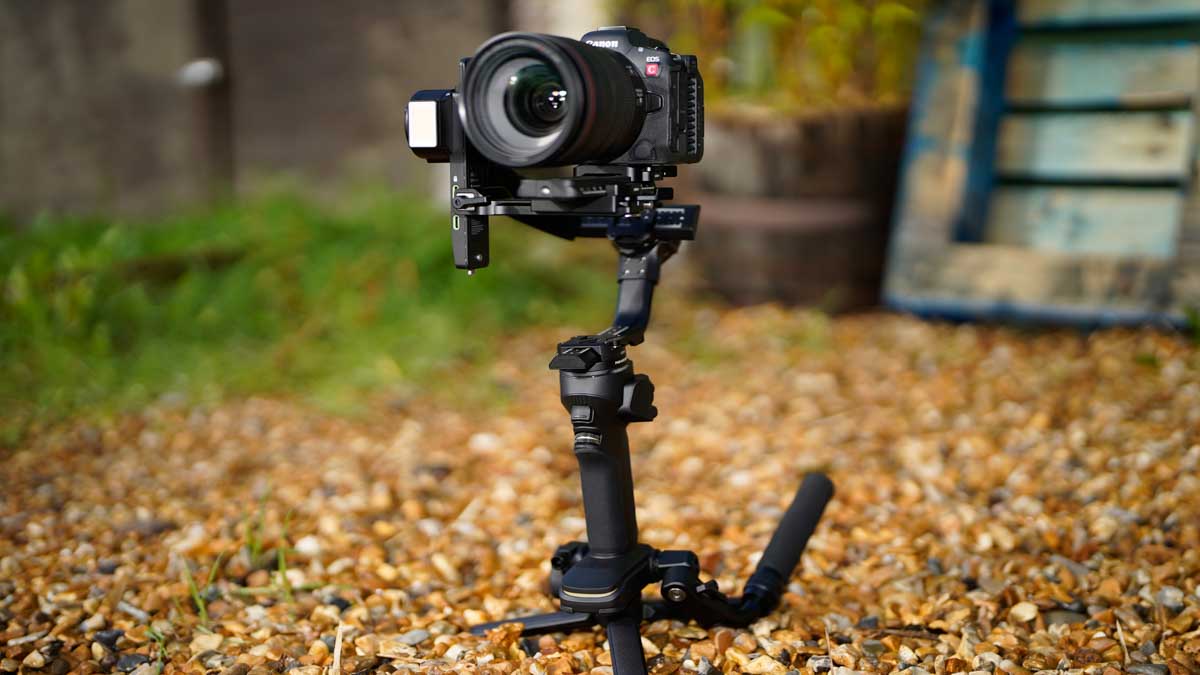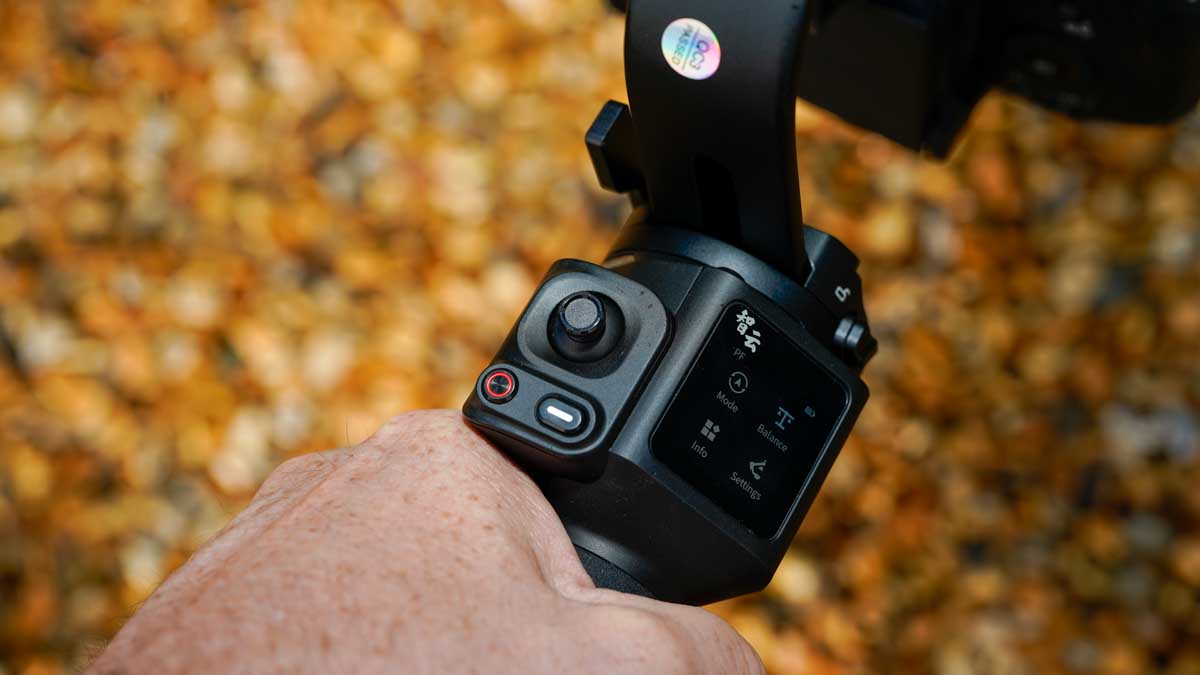If you’re used to older single-handed gimbal stabilisers, then you’ll know what a pain they can be to set up. Once you’ve got the balance with your camera and lens, you typically have to put out tape or markers as guides for future setups. Over time, that setup process does become easier as you learn the techniques and tricks for achieving balance.
What I’ve appreciated about the Crane series since the last release is the ease of the setup process. The Crane 3 was incredibly easy to balance, with powerful motors that meant you could be less than meticulous during setup and still achieve decent performance. However, a gimbal, no matter how powerful, only works to its full potential when the balance on all axes is correct.
With the Crane 4, the balancing process follows the usual procedure of lens-up balance, tilt, roll, and yaw balance, and then auto-calibration to perform a systems check. The design of the Crane 4 makes this process both easy and smooth. A red light on the side serves as a warning if the balance is off, which was rare during the test; if this light shows, you know it’s time to rebalance to avoid mid-shot wobble.

Shooting landscape is how the majority of us operate, but with more people shooting for social media, vertical orientation has become an important consideration. The Crane 4 has an easy clip system that allows you to slide off the camera and remount it vertically. It still takes about a minute, but it’s far faster than most competitor systems.
The Sling system, essentially a handle, makes holding the gimbal in various positions more comfortable. However, its design feels a bit like an afterthought, as does the wrist rest. Both are perfect in function but feel a bit DIY in design. The flaws in these two features are purely aesthetic and don’t impact their effectiveness.
A new addition to the Crane series is the built-in 10W lamp, a significant upgrade over the one seen in the WeeBill series. It comes with a decent diffuser for soft lighting and has a dedicated control wheel on the grip’s side. Throughout the test, I was really impressed with the lamp’s performance and ease of use.

Advanced features are where the Crane 4 excels, offering a range of gimbal modes, including FPV and Follow. The fully integrated app enables you to control the gimbal remotely, and if you have the video transmission hardware and focus controls, you can also monitor and control focus and zoom, although this requires additional hardware.
Bluetooth integration has taken a leap forward, expanding the list of compatible cameras. If you have a compatible camera, you can start and stop recording and adjust ISO, aperture, and shutter speed.
The small screen on the grip is incredibly useful for delving into settings. Most features are easily accessible, but the one you’ll probably use most often is the auto-calibrate function.
The size and design of the grip make this the most comfortable single-handed gimbal stabiliser I’ve used. The joystick is well-positioned, and the Bluetooth integration for starting and stopping recording works seamlessly.
Throughout the test, I balanced a range of cameras, including the Sony A7 III and IV, and the Canon EOS R5 C. All were easy to balance, even the Canon EOS R5 C, which can be challenging due to the bulk of its fan. The Sling grip and wrist rest contributed to the ease of handling, making the lightweight unit comfortable to hold for extended periods.
Overall, the Crane defies its compact size with powerful motors and stabilising effects that make capturing professional-looking footage straightforward. Its system’s expandability sets it apart, offering video transmission, focus, and zoom motors, and an ease of use that’s hard to beat.










 Considering its price, the Crane 4 is an exceptional option for all filmmakers and photographers looking for a bit of automation to assist with high-resolution shots and panoramas.
Considering its price, the Crane 4 is an exceptional option for all filmmakers and photographers looking for a bit of automation to assist with high-resolution shots and panoramas.